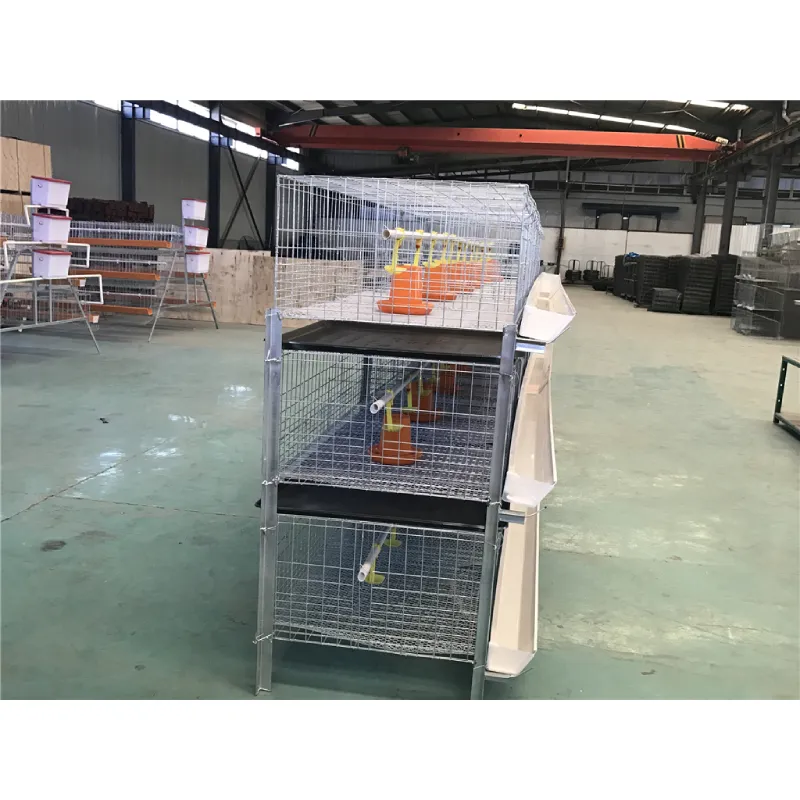plastic egg tray making machine
Nov . 12, 2024 10:00 Back to list
plastic egg tray making machine
The Plastic Egg Tray Making Machine A Comprehensive Overview
In the world of packaging and transportation, the egg industry has unique challenges. Eggs, being delicate and perishable, require specific care during storage and transit. Enter the plastic egg tray making machine, an innovative solution that effectively addresses these issues by producing durable, lightweight trays that keep eggs safe and secure.
What is a Plastic Egg Tray?
Before diving into the manufacturing process, it is essential to understand what a plastic egg tray is. Typically made from high-density polyethylene (HDPE) or polypropylene (PP), plastic egg trays are designed to hold, protect, and facilitate the transportation of eggs. They come in various sizes and designs to accommodate different types of eggs, whether they are regular hen eggs, quail eggs, or specialty varieties.
The Importance of Egg Trays
Egg trays are crucial in minimizing the risk of breakage during handling and shipping. They provide cushioning and support, preventing eggs from rolling around or clashing with one another. Additionally, plastic trays are reusable and recyclable, making them both environmentally friendly and economically viable. This dual benefit appeals to businesses aiming for sustainability while keeping costs low.
The Manufacturing Process
The plastic egg tray making machine is designed to simplify and streamline the manufacturing process. The production typically involves several key steps
1. Material Preparation The initial step involves sourcing high-quality plastic materials, such as HDPE or PP, which are melted down to create a liquid plastic ready for molding.
2. Molding The liquid plastic is then injected into a mold designed to create egg compartments. This process can be done through injection molding or blow molding, depending on the design complexity and production requirements.
3. Cooling Once the plastic has been molded into the shape of an egg tray, it is cooled. Cooling is crucial as it solidifies the plastic, making the tray robust and functional.
plastic egg tray making machine

5. Finishing Touches At this stage, any excess plastic is trimmed off, and additional touches, such as printing and branding, may be applied. This step can also involve quality control checks to ensure that the trays meet specific industry standards.
6. Packaging and Distribution The final step is packaging the trays for distribution. Efficient packing not only protects the trays during transport but also maximizes space in shipping containers.
Benefits of Using Plastic Egg Tray Making Machines
Investing in a plastic egg tray making machine presents numerous advantages for manufacturers and businesses in the poultry industry
- Cost-Effectiveness Although the initial investment might be significant, the long-term savings from reduced breakage, transportation costs, and raw materials can justify the expenditure.
- Automation and Efficiency Modern machines are often automated, allowing for higher production rates and minimizing human error. This automation can lead to faster turnaround times and lower labor costs.
- Customization Many machines allow for customization of the trays produced, enabling businesses to cater to specific clientele or niche markets.
- Sustainability As the demand for sustainable packaging solutions rises, the use of reusable plastic trays can appeal to environmentally conscious consumers, thereby enhancing brand reputation.
Conclusion
The plastic egg tray making machine is an invaluable asset for the poultry industry, providing an effective means of ensuring the safe handling and transportation of eggs. With advancements in technology, these machines are becoming more efficient, cost-effective, and environmentally friendly. As the market for egg production continues to grow, investing in a reliable plastic egg tray making machine can significantly enhance operational efficiency and product safety, ultimately benefiting the entire supply chain from farmers to retailers.
As we move forward, adopting innovative solutions like the plastic egg tray making machine will be essential in meeting consumer demands while maintaining quality and sustainability in the food production sector.
-
Hot Sale 24 & 18 Door Rabbit Cages - Premium Breeding Solutions
NewsJul.25,2025
-
Automatic Feeding Line System Pan Feeder Nipple Drinker - Anping County Yize Metal Products Co., Ltd.
NewsJul.21,2025
-
Automatic Feeding Line System Pan Feeder Nipple Drinker - Anping County Yize Metal Products Co., Ltd.
NewsJul.21,2025
-
Automatic Feeding Line System - Anping Yize | Precision & Nipple
NewsJul.21,2025
-
Automatic Feeding Line System - Anping Yize | Precision & Nipple
NewsJul.21,2025
-
Automatic Feeding Line System-Anping County Yize Metal Products Co., Ltd.|Efficient Feed Distribution&Customized Animal Farming Solutions
NewsJul.21,2025






